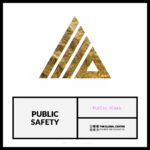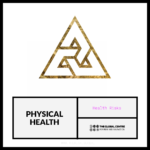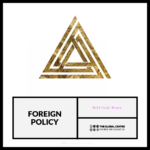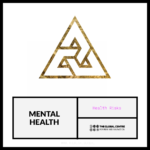The Nexus Reports provide comprehensive evaluations of country-specific risks and opportunities, focusing on biodiversity, ecosystem services, climate change vulnerabilities, socio-economic risks, the food-water-energy nexus, and exponential technologies. Drawing on authoritative sources, these reports offer tailored policy recommendations, detailed analyses, and practical case studies, integrating global scientific research to manage risks and drive sustainable development
Nexus Observatory
Catastrophic Risks
Welcome to GCRI’s Catastrophic Risks Nexus, where NE lab meltdown simulations, parametric finance solutions, and advanced satellite intelligence converge to protect entire regions from existential calamities. From mega-storm landfalls and volcanic super-eruptions to reactor meltdowns and large-scale cyber-physical sabotage, we integrate multi-constellation Earth observation with robust meltdown analytics and cross-sector synergy. This approach unlocks real-time parametric triggers, dynamic resource mobilization, and specialized meltdown training, ensuring societies can predict, absorb, and recover from even the most all-encompassing disasters
Satellite Fusion
Combines multi-constellation imagery to spotlight looming cataclysmic threats—storm surges, facility breaches, or massive wildfires. AI pipelines deliver near-real-time danger mapping for rapid cross-sector mobilization. Supports multi-agency coordination on worst-case meltdown forecasts and immediate relief targeting
Hyperspectral Insight
Captures ultra-fine spectral data from advanced sensors for spotting early meltdown triggers in volatile zones. ML methods isolate chemical anomalies, structural weaknesses, or large-scale contamination plumes. Facilitates quick interventions when catastrophic events threaten industrial sites, reactor cores, or hazardous material storage
GeoAI Modeling
Uses deep learning fused with GIS data to simulate cascading meltdown scenarios across entire regions. Forecasts integrated disruptions—telecom blackouts, high-fatality quake zones, or chain-reactive floods. Equips stakeholders with multi-path contingency planning that accounts for both localized and overarching catastrophes
Parametric Triggers
Relies on NE-driven meltdown alerts, setting automated thresholds for superstorms, radioactive leaks, or extreme quake intensity. Unlocks immediate financing and urgent measures once catastrophic signals exceed safety baselines. Delivers agile, globally aligned resource deployment for firefighting, evacuation, or crisis logistics
Digital Twins
Generates immersive 3D replicas of major industrial corridors, urban centers, or entire cross-border infrastructures. Blends sensor streams, satellite data, and NE meltdown simulations to anticipate vulnerabilities—dam failures, supply chain collapses, or nuclear meltdown drifts. Guides strategic fallback operations, from mass evacuation routes
Innovation Labs
Offers specialized meltdown cohorts where teams employ NE analytics to tackle large-scale catastrophic puzzles. Combines parametric finance frameworks with Earth-observation intelligence for real-time scenario exploration. Awarded certifications validate advanced meltdown risk expertise, bridging operational knowledge and high-level policy
Multisensor Mosaics
Aggregates radar, optical, and thermal captures into a consolidated meltdown “view” for catastrophic risks scenarios. ML-based classification uncovers red-flag anomalies—dam cracks, pipeline ruptures, or explosive fire expansions. Enhances top-level crisis command, ensuring near-instant situational awareness for catastrophic threat management
Edge-Cloud Synergy
Runs AI-based meltdown checks at remote sensor hubs while heavier analytics stay in NE cloud clusters. Sends local emergency alerts the moment critical meltdown triggers—like a seismic spike or toxic leak—are detected. Cuts reaction times drastically while centralizing deeper meltdown intelligence for strategic leadership decisions
Anomaly Tracking
Applies time-series ML to extensive EO archives, highlighting abrupt meltdown precursors—extreme ground shifts, sea swells, or industrial anomalies. Automatically activates parametric coverage for swift global mobilization once meltdown conditions are confirmed. Allows multi-layer correlation of geological, meteorological, and infrastructural data
Trusted By World Leaders
Our leadership is earned through proactive, cutting-edge solutions and initiatives that tackle urgent challenges while balancing immediate impact with long-term sustainability. Strengthened by strategic partnerships with global powerhouses, GCRI sets a new standard for protection and progress in an era of unprecedened risks and opportunities

Our National Working Groups (NWGs) converge to shape a future defined by resilience , innovation , and collaboration. By uniting diverse perspectives through a seamless hybrid model, we ignites breakthrough innovations and fosters dynamic partnerships that secure a brighter, more sustainable future for all
Unlocking the Power of Spatial Finance 🌌 for Disaster Readiness 📡
Transforming risk management by integrating DRR, DRF, and DRI into a seamless, proactive system. Leveraging cutting-edge geospatial analytics and innovative financial triggers, NE enables real-time insights and rapid resource mobilization to build resilient communities and drive sustainable growth
Superstorm & Flood Horizons
geospatial modeling to profile severe storms. Parametric triggers release immediate capital or reroute supply chains once wind, rainfall, or surge thresholds surpass meltdown levels. Micro-credential courses equip city planners, coastal authorities, and corporate teams to create resilient, adaptive storm defenses
Nuclear & Hazardous Reactor Meltdowns
Reactors, reprocessing sites, and other high-risk facilities face meltdown-level incidents if safety thresholds erode. NE meltdown scenario modeling merges Earth observation for structural health with parametric triggers that dispatch containment units or rad-waste transport. Micro-credentials train engineering teams, regulators, and crisis coordinators on meltdown-lens nuclear oversight and transboundary hazard mitigation
Pandemic-Level Biological Catastrophes
High-lethality disease outbreaks can exceed typical contagions, paralyzing supply chains and infrastructure. NE meltdown synergy synchronizes remote medical sensing, parametric triggers, and real-time logistics for mass vaccination or hospital expansions. Cohorts refine meltdown-lens public health governance, aligning NE data streams and multi-sector crisis alignment
Global Supply Chain Collapse
A single meltdown event—port blockade or raw-material shortage—can reverberate across many industries. NE meltdown synergy integrates trade route intelligence, parametric expansions for bridging supply deficits, or reconfigurable inventory channels. Special meltdown-lens labs instruct logistic chiefs, commodity traders, and policy advisors on coordinated, real-time scenario analysis for stable networks
Drought & Agro-Resource Meltdowns
Prolonged drought cycles debilitate water reserves, farmland productivity, and entire food supply chains. NE meltdown scenario modeling merges rainfall indexes, Earth observation crop tracking, and parametric triggers to maintain consistent irrigation and feedstock. Course-based meltdown-lens upskilling ensures agro-corporates, water agencies, and policy stakeholders harness NE meltdown intelligence for climate-smart governance
Seismic & Volcanic Threats
NE meltdown watchers combine earthquake sensor networks, GNSS data, and Earth observation time-series to detect rupture stress or magma buildup. Parametric coverage guarantees prompt quake-response funds or evacuation scaling upon meltdown-grade quake or eruption signals. Special meltdown-lens cohorts guide local governments to integrate NE analytics, cross-ministry cooperation, and public communication strategies
Asteroid & Space Collision Alerts
Advanced orbital monitoring, NE meltdown forecasting, and parametric expansions enable emergency deflection or civil defense plans. Multi-constellation orbit data pinpoints near-Earth objects, meltdown triggers accelerate official readiness once risk levels approach. Targeted meltdown-lens guidance prepares security agencies, astronomers, and policy leads to merge NE analytics for rapid cosmic event responses
Large-Scale Industrial Disasters
Chemical plant blasts, offshore rig collapses, or pipeline ruptures can yield meltdown-scale eco-human fallout. NE meltdown analytics interlink thermal/spectral anomaly tracking with parametric triggers, expediting containment teams, booms, or evacuation resources. Corporate micro-credentials focus on meltdown-tier ICS design, tying scenario planning and NE meltdown frameworks with robust EHS compliance
Massive Cyber-Physical Sabotage
Complex attacks on ICS, nuclear SCADA systems, or major digital platforms can ignite meltdown-scale disasters. NE meltdown watchers monitor infiltration patterns, parametric expansions finance rapid fallback nodes or data backups for crucial operations. Micro-credential programs unify meltdown-lens cybersecurity with NE meltdown intelligence, ensuring swift, decisive responses to digital-physical sabotage
Planetary-Scale Environmental Collapse
Global ecosystem disruption—ocean acidification, biodiversity crashes, or large-scale desertification—poses existential threats. NE meltdown synergy pulls advanced Earth observation feeds with parametric expansions that conserve critical biomes, relocate communities, or launch reforestation drives. Special meltdown-lens training fosters multi-lateral agreements, philanthropic co-investment, and corporate ESG frameworks to avert worst-case ecological meltdown paths
Future Innovation Labs
Innovation Lab
Discover;
Learn;
Build;
We support innovation, collaboration and knowledge-sharing amongst our members, partners and the broader research, development, and education communities. Our WILPs streamline the identification, mitigation, and evaluation of Risks, followed by the optimal use of GRIx to tackle Issues and manage adverse impacts. They provide secure network platforms that enable citizens to participate in MPM and use iVRS to report risks and values anywhere. Risk Pathways deliver out-of-the-box CRS functionality to meet institutional requirements, including SCF taxonomies for digital-green skills, compliance frameworks and real-time validation systems. They help members and QH stakeholders with DICE to navigate essential resources and find the right levers across the public-private-planet landscape.
MPM
Integrated pathways for existing national portfolios on the right to inclusive education, skills development, and career mobility through LLL for all
CRS
Rewarding participation with utility value across the network to increase interoperability and career mobility
DICE
Next-generation of internet for risk and innovation in pluralistic societies
GRIx
Open source standard indexing system for linked open data set about global risk and humanitarian crisis.
iVRS
Stakeholder engagement and reporting mechanism for Environmental, Social and Governance (ESG) risks and impacts
SCF
Frameworks, skills taxonomies, competencies and policies for the twin digital-green transition
Research
0%
Design
0%
Innovation
0%
Acceleration
0%
Policy
0%
Sovereign Debt Risks
10 Steps
- Join “Risk Management” Streams
- Complete the lesson Introduction to Sovereign Debt
- Unlock Inequality Issues
- Unlock Justice Issues
- Publish a proposal on Sovereign Debt Risks
- Reach Political Impact Assessment (PIA) Level I
- Reach Financial Impact Assessment (FIA) Level I
- Reach Social Impact Assessment (SIA) Level I
- Reach Environmental Impact Assessment (EIA) level I
- Join Hackathons
Public Safety Risks
9 Steps
- Join “Risk Management” Streams
- Complete the lesson Introduction to Public Safety Risks
- Unlock SDGs
- Publish a proposal on Public Safety Risks
- Reach Social Impact Assessment (SIA) Level I
- Reach Health Impact Assessments (HIA) Level I
- Reach Environmental Impact Assessment (EIA) level I
- Reach Systems Level Impact Assessment (SLIA) Level I
- Join Hackathons
Physical Health Risks
8 Steps
- Join “Citizen Science” Streams
- Complete the lesson Introduction to Physical Health
- Unlock Health Risks
- Publish a proposal on Physical Health Risks
- Reach Impact Assessments (HIA) Level I
- Reach Environmental Impact Assessment (EIA) level I
- Reach Social Impact Assessment (SIA) Level I
- Join Hackathons
Foreign Policy Risks
11 Steps
- Join “Risk Management” Streams
- Complete the lesson Introduction to Foreign Policy
- Unlock Justice Issues
- Unlock Partnership Issues
- Publish a proposal on Foreign Policy Risks
- Reach Political Impact Assessment (PIA) Level I
- Reach Environmental Impact Assessment (EIA) level I
- Reach Social Impact Assessment (SIA) Level I
- Reach Governance Impact Assessment (GIA) Level I
- Reach Political Impact Assessment (PIA) Level I
- Join Hackathons
Mental Health Risk
8 Steps
- Join “Citizen Science” Streams
- Complete the lesson Introduction to Mental Health
- Unlock Health Issues
- Publish a proposal on Mental Health Risks
- Reach Health Impact Assessments (HIA) Level I
- Reach Social Impact Assessment (SIA) Level I
- Reach Environmental Impact Assessment (EIA) level I
- Join Hackathons





